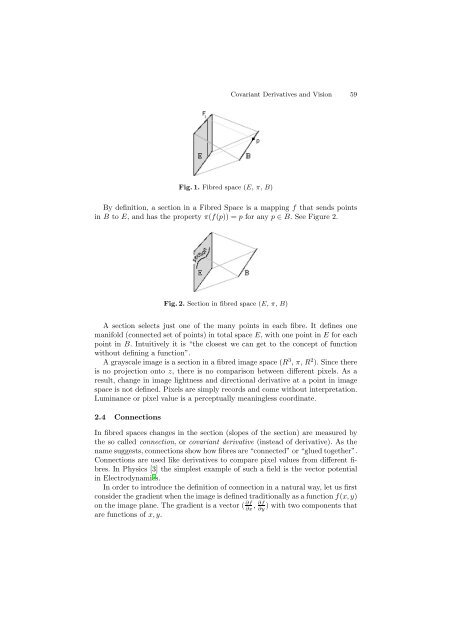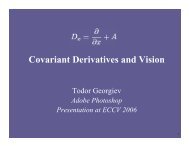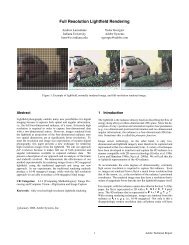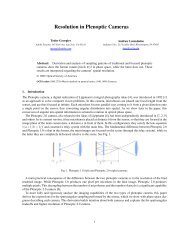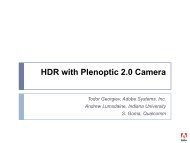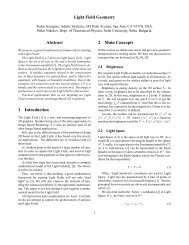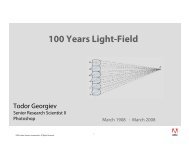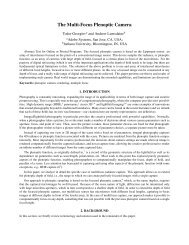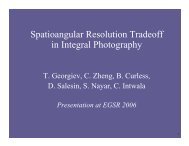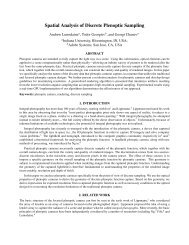Covariant Derivatives and Vision - Todor Georgiev
Covariant Derivatives and Vision - Todor Georgiev
Covariant Derivatives and Vision - Todor Georgiev
You also want an ePaper? Increase the reach of your titles
YUMPU automatically turns print PDFs into web optimized ePapers that Google loves.
Fig. 1. Fibred space (E, π, B)<br />
<strong>Covariant</strong> <strong>Derivatives</strong> <strong>and</strong> <strong>Vision</strong> 59<br />
By definition, a section in a Fibred Space is a mapping f that sends points<br />
in B to E, <strong>and</strong> has the property π(f(p)) = p for any p ∈ B. See Figure 2.<br />
Fig. 2. Section in fibred space (E, π, B)<br />
A section selects just one of the many points in each fibre. It defines one<br />
manifold (connected set of points) in total space E, with one point in E for each<br />
point in B. Intuitively it is “the closest we can get to the concept of function<br />
without defining a function”.<br />
A grayscale image is a section in a fibred image space (R 3 , π, R 2 ). Since there<br />
is no projection onto z, there is no comparison between different pixels. As a<br />
result, change in image lightness <strong>and</strong> directional derivative at a point in image<br />
space is not defined. Pixels are simply records <strong>and</strong> come without interpretation.<br />
Luminance or pixel value is a perceptually meaningless coordinate.<br />
2.4 Connections<br />
In fibred spaces changes in the section (slopes of the section) are measured by<br />
the so called connection, orcovariant derivative (instead of derivative). As the<br />
name suggests, connections show how fibres are “connected” or “glued together”.<br />
Connections are used like derivatives to compare pixel values from different fibres.<br />
In Physics [3] the simplest example of such a field is the vector potential<br />
in Electrodynamics.<br />
In order to introduce the definition of connection in a natural way, let us first<br />
consider the gradient when the image is defined traditionally as a function f(x, y)<br />
on the image plane. The gradient is a vector ( ∂f ∂f<br />
∂x , ∂y ) with two components that<br />
are functions of x, y.


